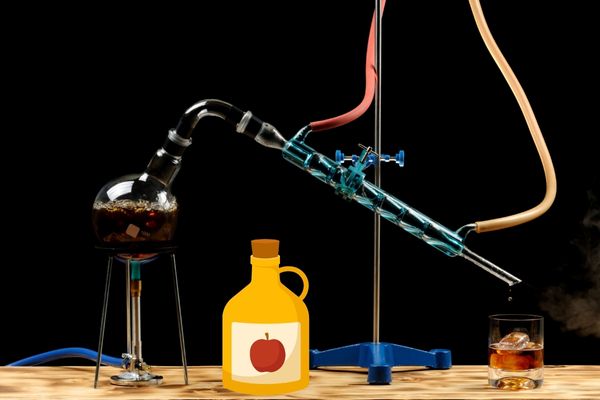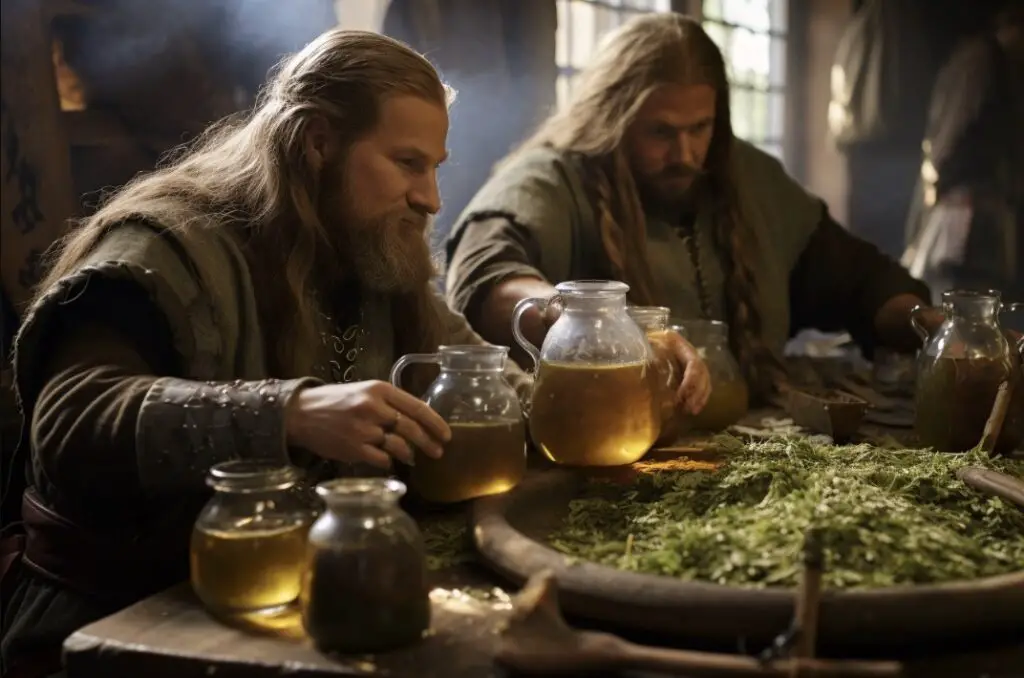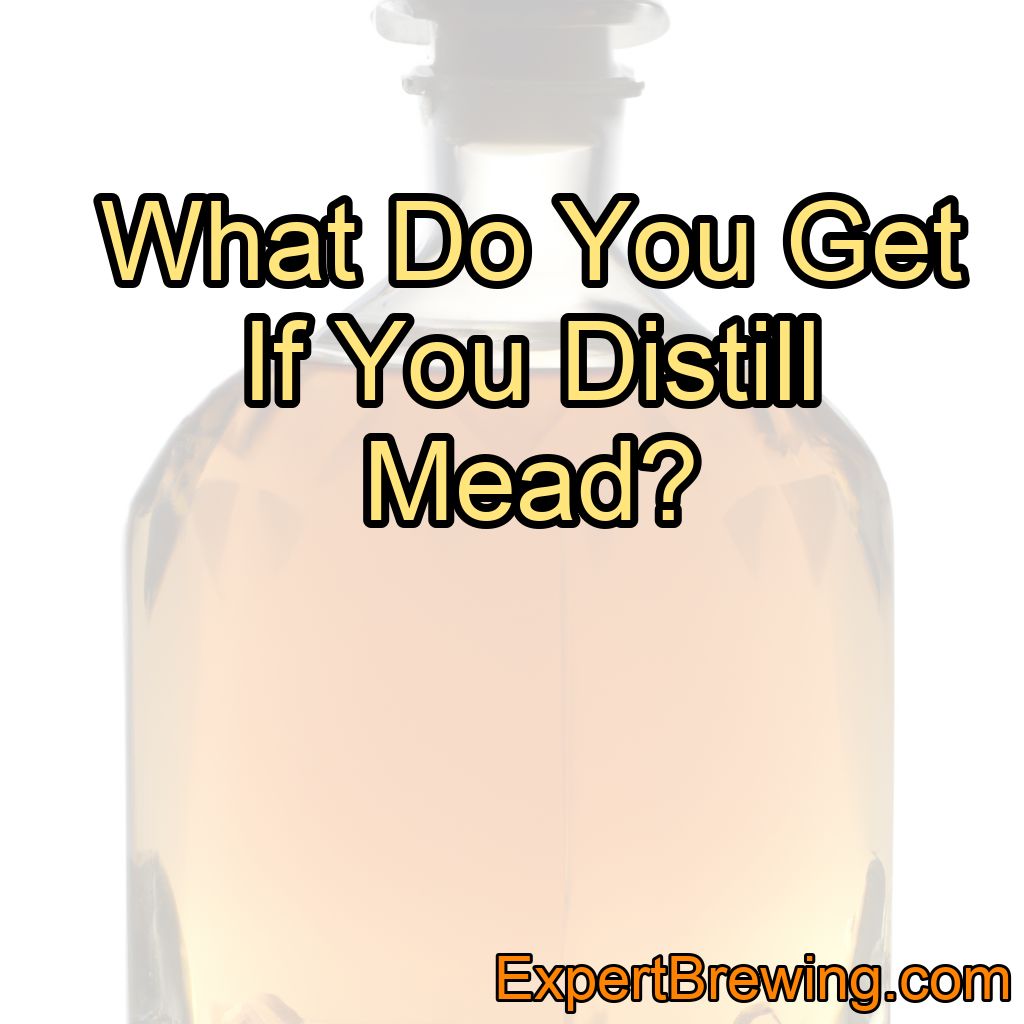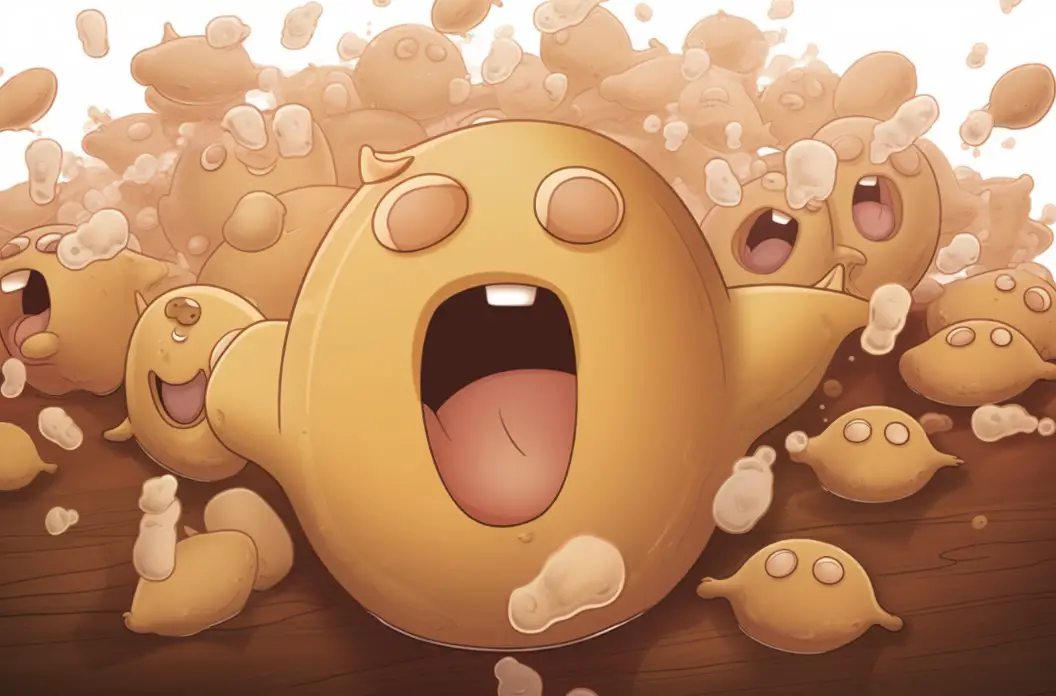Mead, the ancient alcoholic beverage made from fermented honey, holds a special place in the hearts of many brewers.
If you’re like me, you’ve probably spent countless hours and numerous batches perfecting your recipe, enjoying the sweet, complex flavors of mead. But have you ever wondered, “What do you get if you distill mead?“
The answer is honey brandy, also known as Mead Brandy or Honey Liquor.
By distilling mead, you’re able to create a unique, delicious spirit that maintains the sweet essence of honey while offering a stronger alcohol content and a broader range of flavors.
The Distillation Process
Distillation is a process used in brewing to separate and purify substances based on differences in their boiling points. In the context of brewing, distillation is used to increase the alcohol content of beverages by evaporating and condensing the alcohol.

How to Distill Mead
Distilling mead into honey brandy involves a few key steps. First, you need to brew a batch of mead.
Once the mead is brewed and fermented, it’s then placed in a still where it’s heated to a specific temperature.
The heat causes the alcohol in the mead to evaporate, which is then collected and condensed into a liquid form. This liquid is your distilled mead, or honey brandy.
The Flavor Profile of Honey Brandy
One of the most exciting aspects of distilling mead is the resulting flavor profile. Unlike other spirits, honey brandy maintains the sweet, floral notes of mead, but with a more robust and complex flavor profile. It’s a strong spirit, similar to whiskey or brandy, but with a unique taste that can only come from honey.
The Art of Aging Honey Brandy
Just like whisky or other types of brandy, honey brandy can be aged to further enhance its flavor. Aging honey brandy in oak barrels can imbue it with additional flavors and complexities. The oak can add notes of vanilla, caramel, and spice, adding layers to the honey’s sweetness.
The History of Honey Brandy
Honey brandy, much like mead, has a rich history. It’s believed that the distillation of mead into a spirit form dates back to ancient times. In fact, honey brandy was a popular drink among the Vikings, who appreciated its strong, sweet flavor and high alcohol content.

The history of honey brandy is intertwined with the origins of mead, a fermented beverage made from honey, water, and often various fruits, spices, or grains. Mead itself has an ancient history, dating back thousands of years. It is considered one of the oldest known alcoholic beverages consumed by humans.
The process of fermenting honey with water to create mead was a natural discovery in early human civilizations, as honey was abundant in nature and could be preserved for long periods without spoiling. This early version of mead was likely a simple concoction, as distillation techniques had not been developed yet.
As civilizations advanced and knowledge of distillation spread, the art of turning mead into a more potent form emerged. The exact origin of distillation is debated among historians, with various ancient cultures claiming to have developed the technique independently. However, it is commonly believed that the concept of distillation was first practiced by alchemists in ancient Egypt, Greece, and the Middle East.
The Vikings, known for their seafaring prowess and exploration, played a significant role in the spread of honey brandy throughout Northern Europe. They were among the early adopters of distillation techniques, refining the process of transforming mead into a spirit form. The result was a potent and flavorful beverage that could withstand long journeys at sea and harsh climates.
Honey brandy became an integral part of Viking culture, often consumed during celebrations, feasts, and social gatherings. The Vikings held mead and honey brandy in high regard, considering it a gift from the gods and associating it with wisdom, courage, and strength. In Norse mythology, the gods themselves were believed to consume mead, further elevating its status in Viking society.

The popularity of honey brandy continued to grow, and as trade routes expanded, it reached other parts of Europe. Over time, various regions developed their own unique styles and methods of producing honey brandy, each with distinct characteristics and flavors.
In the modern era, honey brandy remains a beloved beverage for enthusiasts of traditional and craft spirits. Artisanal distillers and meaderies around the world continue to explore the rich history of honey brandy, experimenting with different ingredients and aging processes to create unique expressions while paying homage to this ancient elixir.
Today, honey brandy stands as a testament to the ingenuity of our ancestors and the enduring appeal of a drink that has withstood the test of time. Whether sipped neat, mixed in cocktails, or used in culinary creations, honey brandy continues to be celebrated and cherished, connecting us to our historical roots and the ancient craft of distillation.
The Benefits of Distilling Your Own Mead
Distilling your own mead has many benefits. Not only does it allow you to create a unique, delicious spirit, but it gives you complete control over the brewing process. You can adjust the flavor profile to your liking, experiment with different types of honey, and even age your honey brandy to create a truly unique beverage.
Conclusion
In conclusion, distilling mead results in a flavorful and potent spirit known as honey brandy. This process allows the brewer to explore new flavor profiles while maintaining the sweet essence of honey inherent to mead.
Whether you’re a seasoned brewer or a newbie, distilling your own mead is a rewarding experience that offers endless possibilities for experimentation and discovery.
Here are 10 facts about distilled mead:
1. Distilling mead results in honey brandy, also known as Mead Brandy or Honey Liquor.
2. The process involves brewing and fermenting mead, then heating it in a still to evaporate and condense the alcohol.
3. Honey brandy has a strong, robust flavor profile that maintains the sweet, floral notes of mead.
4. Much like other spirits, honey brandy can be aged in oak barrels to enhance its flavor.
5. Honey brandy has a rich history and was a popular drink among the Vikings.
6. Distilling your own mead allows you to create a unique spirit and gives you complete control over the brewing process.
7. The distillation process increases the alcohol content of the beverage.
8. You can experiment with different types of honey in your mead, resulting in different flavors in your honey brandy.
9. Aging honey brandy can add notes of vanilla, caramel, and spice to the beverage.
10. Distilling mead is a rewarding experience that offers endless possibilities for experimentation and discovery.
FAQs
What is the ABV of distilled mead?
The ABV (alcohol by volume) of distilled mead can vary depending on the specific recipe and distillation process used. However, distilled mead typically has an ABV ranging from 40% to 50%, similar to other spirits such as vodka or whiskey.
What is distilled honey called?
Distilled honey is commonly known as honey mead or honey wine. It is an alcoholic beverage made by fermenting honey with water and sometimes with the addition of fruits, spices, or grains.
Is mead distilled or Brewed?
Mead is brewed, not distilled. It is made by fermenting honey with water and sometimes adding fruits, spices, or grains. Distillation is a separate process used to create spirits like vodka or whiskey.
What is honey moonshine called?
Honey moonshine is commonly referred to as “mead.”
How much honey do I need for 5 gallons of mash?
The amount of honey needed for a 5-gallon mash depends on the desired sweetness and alcohol content of the final product. As a general guideline, a typical honey mead recipe uses around 3-4 pounds of honey per gallon of water. Therefore, for a 5-gallon mash, you would need approximately 15-20 pounds of honey. However, it’s important to note that honey can vary in sweetness, so adjusting the amount based on taste preferences is recommended.
What happens if you distill honey?
When honey is distilled, the water content evaporates, leaving behind a concentrated form of honey known as honey distillate or honey essence. This process intensifies the flavors and aromas of the honey, resulting in a more potent and concentrated product. The distillation process can also remove impurities and clarify the honey. Honey distillate is commonly used in culinary applications, such as flavoring beverages or adding depth to various recipes.




